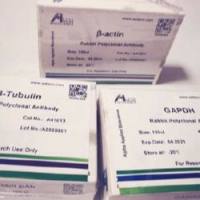In human cells, small noncoding RNAs have been shown to possess an ability to exert regulatory control of gene expression
when they are generated to target a gene promoter specifically. Mechanistically, small RNA-directed transcriptional gene suppression
functions by targeting of epigenetic modifications, such as histone and DNA methylation, to a targeted promoter locus, the
result of which is the restriction of the action of RNA polymerase II and gene transcription specifically at the targeted
gene promoter (56, 57). In human cells, this activity requires a transcriptional silencing complex that consists of Argonaute
1 (Ago-1) (54, 55), DNA methyltransferase 3A (47, 48, 56), and histone deacetylase 1 (48, 49) as well as a low-copy promoter-associated
RNA that is expressed and spans the RNA-targeted loci (57). Importantly, as this mode of RNA-directed gene regulation functions
through targeted silent state epigenetic changes, it has the potential to be a longer lasting if not permanent mode of gene
silencing that may also be refractory to compensatory mutations as the targeting is at the level of chromatin and not at the
genes mRNA level.






